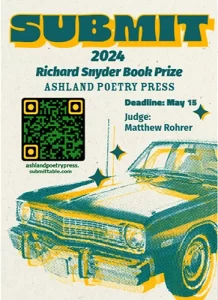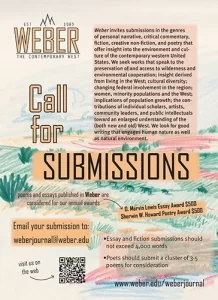Yellow Medicine Review – Fall 2009
Volume 6
Fall 2009
Biannual
Steven Ellerd
This is a thick, meaty text. At slightly more than 350 pages, this publication looks brilliant standing toe-to-toe with any anthologies you have marching across your shelf. The volume is packed with fiction, nonfiction, and poetry from over 50 contributors. The cover is described as a Po-Collage, a combination of poetry and visual art, by artist Valery Oisteanu. The collage of cupids striking at Siamese twins under the cover of umbrellas lends a threatening edge to a broad context. Appropriate, as the entire issue is devoted to commemorating the twenty years since the fall of Communism in Europe as depicted through the writing of mostly Eastern Europeans. The selected writings echo the disjointed nature between the menaces of both the past and present. The most striking example of the issue’s focus comes in the opening stanza of William Doreski’s moving “Life Studies.”
This is a thick, meaty text. At slightly more than 350 pages, this publication looks brilliant standing toe-to-toe with any anthologies you have marching across your shelf. The volume is packed with fiction, nonfiction, and poetry from over 50 contributors. The cover is described as a Po-Collage, a combination of poetry and visual art, by artist Valery Oisteanu. The collage of cupids striking at Siamese twins under the cover of umbrellas lends a threatening edge to a broad context. Appropriate, as the entire issue is devoted to commemorating the twenty years since the fall of Communism in Europe as depicted through the writing of mostly Eastern Europeans. The selected writings echo the disjointed nature between the menaces of both the past and present. The most striking example of the issue’s focus comes in the opening stanza of William Doreski’s moving “Life Studies.”
In Russia and Poland the snow
rests so firmly on the graves
of my ancestors it anchors me
to the sentiment of windy
treeless plains and war-rumpled cities
rebuilt in faceless concrete.
The fiction tends to be brief, but the impact and legacy of autocratic governments frames short explosions of intensity. Sharon Kae Reamer’s “Republikflucht” combines an element of wistful supernaturalism with dogged determination to remember the fall of the Berlin Wall and its final victim. Balancing such hope is the bittersweet story of a gypsy boy’s ambitions clashing with family obligations in Daniela Petrova’s “Orpheus Ascending in Fakulteta Mahala.” An anxious Ivo is caught between the world of his own desires and the weight of history, and the reader is drawn into the pain of Ivo with the finality of a gunshot.
This dichotomy of what the dissolution of Communism could have meant and what actually occurred in the span of twenty years is showcased in Romanian poet Andrei Codrescu’s opening essay “Return to Romania: Notes of a Prodigal Son.” He traces his several visits back to Romania in the 1990’s and punctuates his observation with lamentation for how the new Capitalists were old Communists with new tricks. What the reader takes away is a multi-faceted view of what freedom really means to a society entrenched in attitudes of complacency older than any political system.
Of course, what guest editor Andrei Guruianu writes is true as well: “[T]he idea of borders and divisions, economic and political struggles, fractured identities and an uncertain future struck a chord with writers around the world.” You can find them in these pages, where the topic spreads to Lyz Lenz’s Korean story, “The Grandmaster,” and Susan Deer Cloud’s poem, “My Gypsies.” The emotions and truths that resonate with the topical theme of the issue expand far across any static expectations of the reader. What you receive in the Yellow Medicine Review is a rich banquet stuffed with everything lean, the fat exorcised.
[www.yellowmedicinereview.com/]




